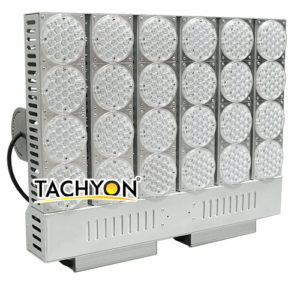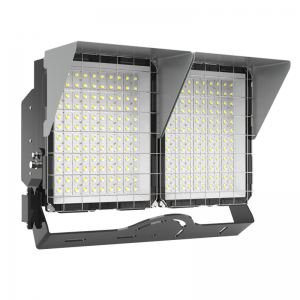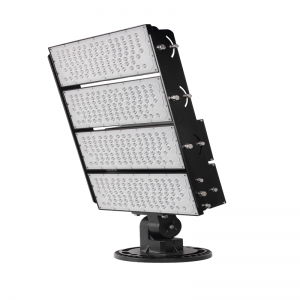LED Welding Precautions
LED Electrostatic Discharge (ESD for short) test:
General LED anti-static: above 500KV; blue, white, and pure green light above 200V.
At present, the biggest problem in the use of high-brightness LEDs is the impact of ESD (static electricity). Static electricity is the main factor causing the leakage of LED materials (IR / reverse current). 90% of the static electricity comes from the failure to ground the equipment and the operator not equipped with corresponding anti-static settings. The brightness and color of the LED after the leakage It will not show bad phenomena immediately, but its brightness will obviously decrease or be unstable and not bright during normal and long-lasting work. Therefore, in the manufacturing operation, some control should be done in terms of anti-static.
- The test machine needs to be grounded (separate ground wire),
- The tester needs to be equipped with an anti-static ring (must be wired and connected to a separate ground wire),
- Avoid violent friction of the material, such as moving the material back and forth in the material tray and repeatedly moving the material on the table can cause leakage.
The harm and prevention of static electricity to LED:
The basic physical characteristics of static electricity are: attraction or repulsion, and there is a potential difference with the earth, which will generate a discharge current. The impact of these three characteristics on electronic components:
- Electrostatic adsorption of dust reduces the insulation resistance of components (shortens the life).
2.Electrostatic discharge destroys, so that the components are damaged and cannot work (safety destruction).
3.The heat generated by electrostatic discharge or current can cause damage to the component (potential damage).
- The electromagnetic field generated by electrostatic discharge has a large amplitude (up to hundreds of volts/meter) and a very wide spectrum (from tens of megabytes to several gigabytes), causing interference or even damage to electronic devices (electromagnetic interference).
If the components are damaged, they can be detected and eliminated in production and quality control, with less impact. If the component is slightly damaged by static electricity, it is not easy to find under normal testing, and it will not appear until it has been used due to multiple layers of processing. Not only is it not easy to check, it also consumes a lot of manpower and financial resources to find the problem, and The resulting loss may be huge. The copper mesh on the floor of the production workshop is treated with static absorption (separate ground wire), welding equipment (including electric soldering iron, automatic welding machine and testing machine) must be grounded, and the operator must be equipped with an anti-static ring.
Precautions for LED Storage
LAMP LED save:
Below 5-30℃/60%RH, it can be stored for 6 months without unpacking; after unpacking, use it in one week to prevent oxidation of the PIN foot. SMD LED (moisture-proof packaging) storage:
Below 5-30℃/60%RH, it can be stored for 12 months without unpacking; after unpacking, use it in 3 days to prevent the LED from getting damp. The LED will fail when soldering at high temperature. Put an end to the phenomenon of not sealing within 12 hours.
LED use precautions
LED welding conditions
(1) Soldering iron soldering: soldering iron (maximum 30W) tip temperature does not exceed 260℃; soldering time does not exceed 3 seconds; the soldering position is at least 2 mm away from the colloid.
(2) Dip soldering: the highest temperature of dip soldering is 260℃; the dip soldering time is no more than 5 seconds; the dip soldering position is at least 2 mm away from the colloid.
LED pin forming method
(1) It must be 2 mm away from the colloid to bend the bracket.
(2) The stent forming must be done with fixtures or by professionals.
(3) The bracket forming must be completed before welding.
(4) The support forming needs to ensure that the pins and spacing are consistent with the circuit board.
LED installation method:
(1) Pay attention to the arrangement of the outer wires of various devices to prevent incorrect polarity installation. The device should not be too close to the heating element, and the working conditions should not exceed its specified limits.
(2) Be sure not to install the LED when the pins are deformed.
(3) When deciding to install in the hole, calculate the size and tolerance of the face and the hole distance on the circuit board to avoid excessive pressure on the bracket.
(4) When installing the LED, it is recommended to use the guide sleeve to position it.
(5) Before the soldering temperature returns to normal, it is necessary to avoid subjecting the LED to any vibration or external force.
Application Note of LED Drive Power
Due to the advantages of environmental protection, long life and high photoelectric efficiency, LED has been rapidly developed in various industries in recent years. The driving power of LED has become a hot spot. Theoretically, the service life of LED is more than 100,000 hours, but in the actual application process In this case, due to the improper design of the driving power supply and the improper selection of the driving mode, the LED is extremely easy to damage.
When we design the LED driver power supply, it is necessary to know the LED current and voltage characteristics. Due to different LED manufacturers and LED specifications, the current and voltage characteristics are different. Now take the typical specifications of white light LED as an example. According to the current and voltage change rules of LED, the general application forward voltage is about 3.0-3.6V, the typical value is 3.3V, and the current is 20mA.
When the forward voltage is applied to both ends of the LED When the forward voltage exceeds 3.6V, the forward voltage increases slightly, and the forward current of the LED may increase exponentially, causing the temperature of the LED luminous body to rise too fast, thereby accelerating the light attenuation of the LED, shortening the life of the LED, and even burning in severe cases. Bad LED. According to the voltage and current characteristics of the LED, strict requirements are put forward on the design of the drive power supply.
At present, many manufacturers produce LED lighting products (such as guardrails, lamp cups, and projection lamps), which use resistance and capacitance to step down, and then add a zener diode to stabilize the LED to supply power to the LED. This way of driving the LED has great defects First of all, the efficiency is low. It consumes a lot of power on the step-down resistor, which may even exceed the power consumed by the LED, and cannot provide high-current drive, because the larger the current, the greater the power consumed on the step-down resistor, so The LEDs of many products dare not use parallel connection, and all use series connection to reduce current.
Secondly, the ability to stabilize the voltage is extremely poor, and there is no guarantee that the current through the LED will not exceed its normal working requirements. When designing the product, the voltage across the LED is reduced for power supply and drive, which is at the cost of reducing the LED brightness. Using the resistance and capacitance step-down method to drive the LED, the brightness of the LED cannot be stable. When the power supply voltage is low, the brightness of the LED becomes dim, and when the power supply voltage is high, the brightness of the LED becomes brighter. The biggest advantage of the resistance-capacitance step-down method of driving LEDs is low cost.
According to the characteristics of LED current and voltage change, it is feasible to drive the LED with constant voltage. Although the commonly used voltage stabilizing circuit has the disadvantages of insufficient voltage stabilization accuracy and poor current stabilization ability, it may be over-precisely designed in some product applications , Its advantage is still not replaced by other driving methods.
The constant current driving method is an ideal LED driving method. It can avoid the current fluctuation caused by the change of the forward voltage of the LED, and the constant current makes the brightness of the LED stable. Therefore, many manufacturers choose constant current mode to drive LED.
Another LED driving method is feasible, it is neither constant voltage nor constant current, but through the design of the circuit, when the LED forward voltage increases, the driving current is reduced, which ensures the safety of LED products. Of course, the increase in forward voltage can only be within the tolerance range of the LED, too high will damage the LED.
The ideal LED driving method is to use constant voltage and constant current. But the cost of the drive increases. In fact, each driving method has advantages and disadvantages. According to the requirements and application of LED products, reasonable selection of LED driving methods and precise design of the driving power supply become the key.






